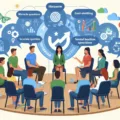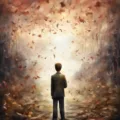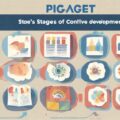What is Creativity?
Creativity is the ability to generate novel and valuable ideas, solutions or products. It involves looking at things from new perspectives, making connections between seemingly unrelated concepts, and thinking outside the box. Creativity enables us to solve problems, express ourselves, and push the boundaries of what’s possible.
Key Aspects of Creativity
There are a few key aspects that define creativity:
- Originality – Coming up with fresh, uncommon or unique concepts.
- Usefulness – Ideas should serve a purpose or meet a need.
- Imagination – Ability to think beyond the scope of reality.
- Innovation – Turning creative ideas into actual products, solutions or artworks.
Creativity involves a complex interplay between divergent thinking (generating many ideas) and convergent thinking (evaluating and selecting the most promising ideas to implement).
Types of Creativity
There are two main types of creativity:
- Everyday creativity – Being creative in small yet meaningful ways in daily life, like trying a new recipe, decorating a room, or finding solutions to ordinary problems.
- Eminent creativity – Major breakthrough innovations that have a lasting impact in a field, like developing groundbreaking technologies, influential artworks or revolutionary scientific theories.
Creativity can manifest itself in many domains like arts, science, business, everyday life and more.
Barriers to Creativity
There are certain barriers that can inhibit or block creative thinking:
- Self-censoring and excessive self-criticism.
- Social disapproval or peer pressure.
- Overanalysis rather than freely imagining.
- Stress, anxiety, depression or lack of motivation.
- Rigid thinking patterns and closed-mindedness.
- Lack of time, resources or opportunities to experiment.
By being aware of these barriers we can consciously cultivate habits, attitudes and environments more conducive to creativity.
Cultivating Creativity
Here are some tips for boosting creativity:
- Keep an open, curious and playful mindset.
- Immerse yourself in creative inspiration by engaging with diverse ideas, artforms and people.
- Make time and space for freely imagining without self-judgement.
- Try brainstorming sessions and creative challenges to get unstuck.
- Collaborate with others to spark new connections.
The seeds of human creativity exist within us all. With the right nourishment and care, we can cultivate our innate creativity to enrich our lives and our world.
Frequently Asked Questions
What are the characteristics of a creative person?
Creative people often share traits like curiosity, open-mindedness, imagination, risk-taking, persistence and nonconformity. They are not afraid to be different or go against the grain of traditional thinking.
Is creativity something you are born with?
While some may have a natural creative aptitude, creativity research shows that it can certainly be nurtured, cultivated and strengthened like a muscle through practices, environments and mindsets conducive to creative thinking.
What inhibits creativity the most?
Fear is often the biggest inhibitor of creativity – fear of failure, rejection, looking foolish or not gaining approval. By cultivating self-acceptance we can let go of fear and access our innate creative potential.
What is the process of creativity?
The creative process typically includes steps like gathering information, intensely focusing on a problem, freely imagining solutions, evaluating ideas and ultimately choosing promising options to implement based on testing and feedback.
How do you measure creativity?
While creativity can be subjective, many assessment tools measure creative potential and achievement by evaluating factors like fluency of ideas, originality, imagination, problem-solving abilities, willingness to take risks and ability to elaborate on concepts.









